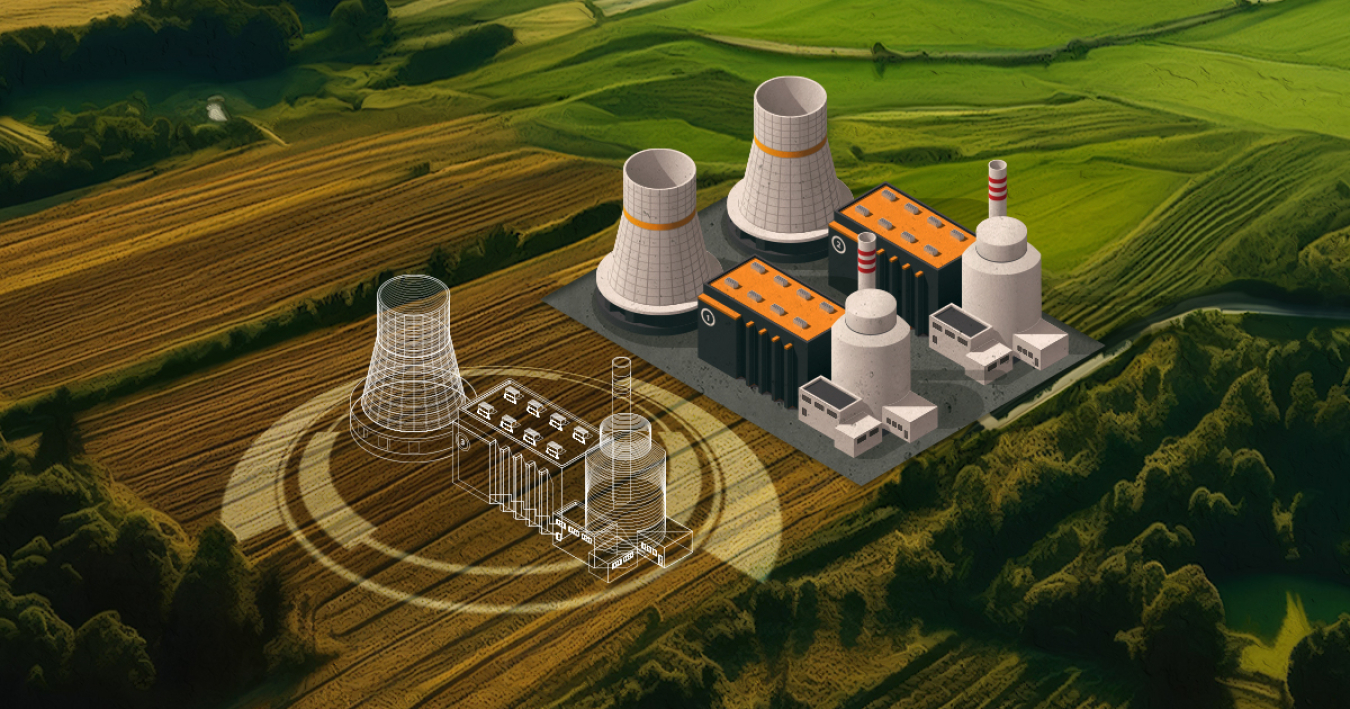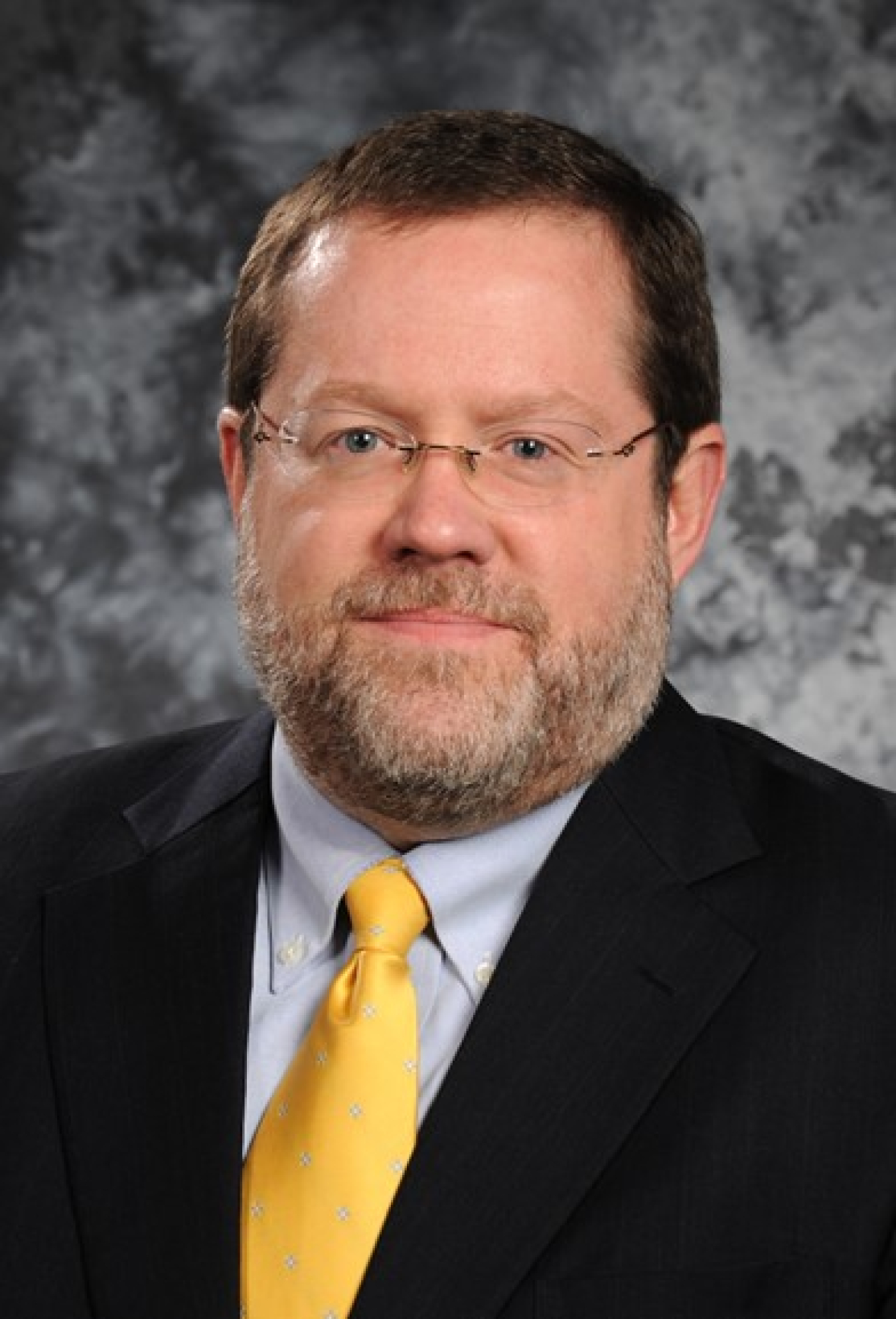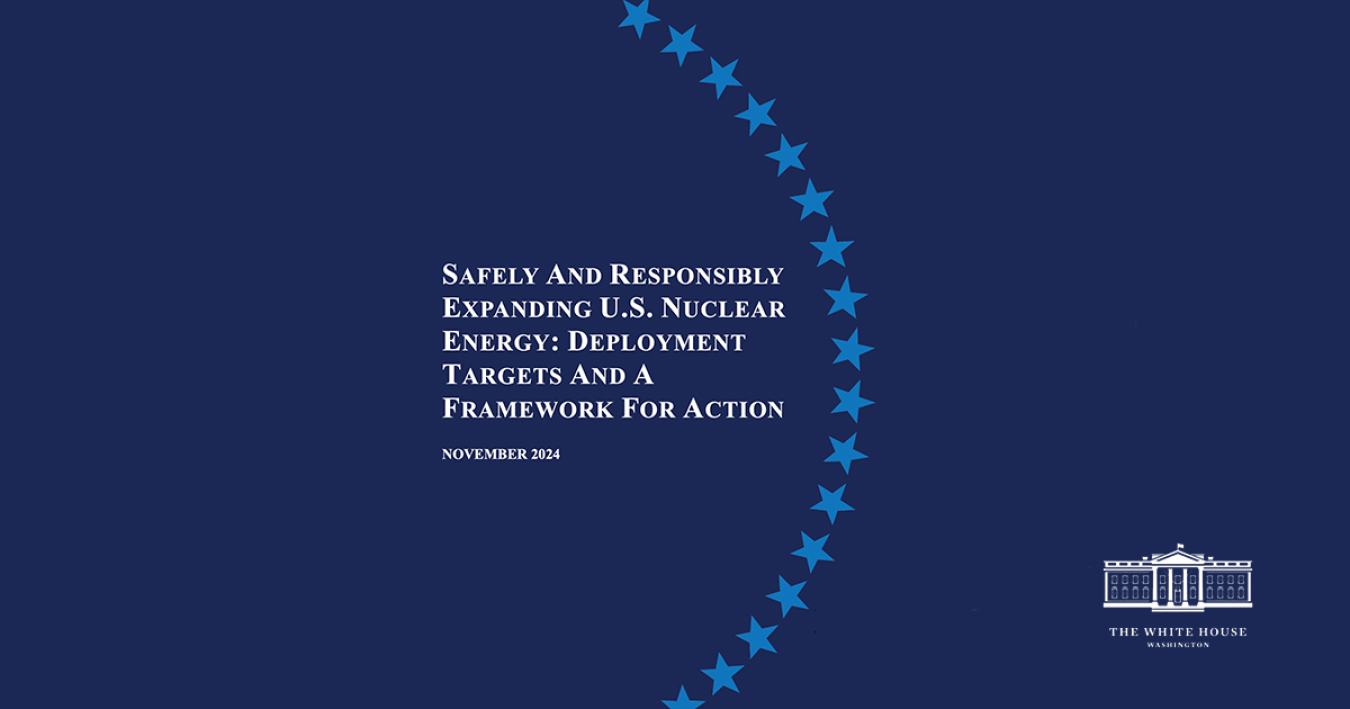U.S. targets map out 200 GW of new nuclear capacity by 2050.
November 12, 2024Paul Terek used to be one of the top decathletes in the world.
He was an All-American at Michigan State University and competed for Team USA in Athens, Greece, during the 2004 Olympic Games.
After injuries sidelined his career, Paul landed a good-paying union job in operations at the Diablo Canyon nuclear power plant in California.
In 2016, Paul and roughly 1,300 of his fellow employees were informed that the plant would close starting in 2024 — putting their future plans in jeopardy.
Unit 1 at the plant was supposed to shut down this month, on November 2.
But thanks to local advocacy groups, state action, and federal nuclear credits, Paul is still helping to operate the plant today, and will be for the foreseeable future.
This is a success story that we might not have seen a few years back when nuclear power plants were closing due to the economics.
Now, plants like these are looking to extend operations, retired reactors are in the process of restarting, and new reactors are inching closer to deployment thanks to the historic investments and tax incentives provided by the Bipartisan Infrastructure Law and Inflation Reduction Act.
Both pieces of legislation are crucial climate and energy security components to the Administration’s Investing in America Agenda, and it’s causing many communities throughout the country to reconsider nuclear power as an affordable option to lower emissions, grow our economy, and strengthen our national security.
Setting Nuclear Deployment Targets
It’s no secret that nuclear power will need to play a role in helping us avoid the worst impacts of climate change and enhance the energy security of the United States, along with our allies and partners.
Nuclear energy is the nation’s largest source of clean power and avoids more than 470 million metric tons of carbon dioxide emissions each year, which is the equivalent of removing 100 million cars from the road.
The U.S. Department of Energy estimates we’ll need an additional 200 gigawatts (GW) of new nuclear capacity to keep pace with future power demands and reach net-zero emissions by 2050.
But how will we get there?
The United States just set new deployment targets at the U.N. climate summit (COP29) in Baku, Azerbaijan.
The plan is to add 35 GW of new capacity by 2035 and achieve a sustained pace of 15 GW per year by 2040 to help keep us on track toward our ultimate goal.
The new framework is the first of its kind for our nuclear sector and identifies more than 30 actions the U.S. government can take, along with industry and power customers, to help expand our domestic capacity.
The targets also align with last year’s historic pledges at COP to triple global nuclear capacity by 2050 and to secure a nuclear fuel supply chain that’s free from Russian influence.
The Path to Net-Zero
The timely expansion of our domestic nuclear capacity will require us to build new reactors at a pace that we haven’t seen since the 1970s — relying heavily on design standardization, new manufacturing techniques, and the lessons learned from past deployments.
Large-scale light-water reactors, like the AP1000 units recently built in Georgia, along with new small modular- and microreactor designs could all be built in the early 2030s to help meet the unique heat and power needs of different power customers and our military.
That means new infrastructure, supply chains, and fuel cycles will need to be established as utilities and power customers work together creatively to help share project risks.
Power uprates at existing facilities and retired reactor restarts will also need to be leveraged to bring additional capacity online — creating new employment opportunities for thousands of Americans across the country.
Building New Capacity

In order to meet these new deployment targets, we don't need to reinvent the wheel.
Preliminary research from our office shows that a majority of our nuclear power plants could host up to 60 GW of new capacity by building large-scale light water reactors like the AP1000s.
That number could grow to 95 GW if you look at sites that can potentially host small modular reactors.
Many of these sites were originally designed for additional units that were never built, and utilities could take advantage of previous engagements with the U.S. Nuclear Regulatory Commission to expedite the licensing process.
The study also found an additional 128 to 174 GW of new capacity could also be built near U.S. coal plants depending on the reactor type, which includes small modular reactors.
These smaller reactors would require less up-front capital investment to build — making them more accessible to potential customers and financers.
They could also leverage some of the existing infrastructure at the coal plants, along with the specialized local workforce, to ensure no community is left behind in this transition to a net-zero economy.
The impacts of the Bipartisan Infrastructure Law and Inflation Reduction Act, along with recent legislation like the ADVANCE Act that streamlines regulatory processes, have built a wave of momentum for our domestic nuclear sector.
We have rebuilt our entire workforce and supply chains to bring two new AP1000 reactors online in consecutive years and hope to capitalize on the lessons learned from this project.
We’re working to restart two retired reactors to bring additional capacity and jobs back to communities in Michigan and Pennsylvania before the end of the decade.
We’re working to demonstrate new technologies and lower the risk of developing several advanced reactor designs to bring a diverse suite of clean power systems to the marketplace.
We’re bringing key stakeholders to the table to find the best “match” for these systems to ensure their deployment.
And, we’re securing the availability of high-assay low-enriched uranium to make sure these technologies are not dependent on foreign entities like Russia when they start up their systems for the first time.
The United States is built to do the hard things.
We can do this, and I hope to see workers like Paul Terek still in the control room when we reach the finish line.
Dr. Michael Goff

Dr. Michael Goff is the Principal Deputy Assistant Secretary for the U.S. Department of Energy’s Office of Nuclear Energy. Prior to joining the office as the PDAS, Dr. Goff was on assignment from Idaho National Laboratory (INL) to the Office of Nuclear Energy, where he was serving his third term as senior advisor to the Assistant Secretary. Dr. Goff also served a multi-year assignment as the assistant director for Nuclear Energy/Senior Policy Advisor in the Office of Science and Technology Policy in the Executive Office of the President. He has held several management and research positions over more than 30 years at INL and Argonne National Laboratory.
Dr. Goff has more than 70 publications related to the nuclear fuel cycle including separations technology, high-level waste development, and safeguards. Dr. Goff has a bachelor's degree of nuclear engineering (1986), a MSNE (1988), and a Ph.D. in nuclear engineering (1991), all from Georgia Tech.


